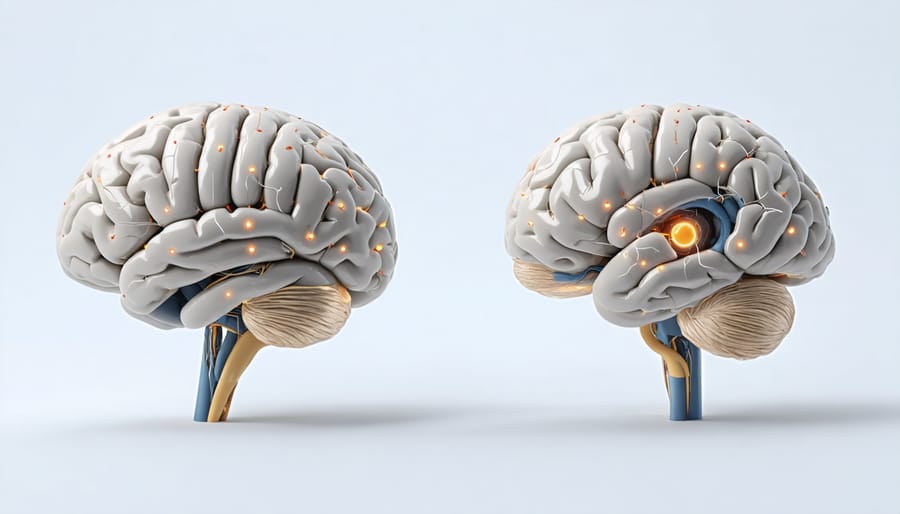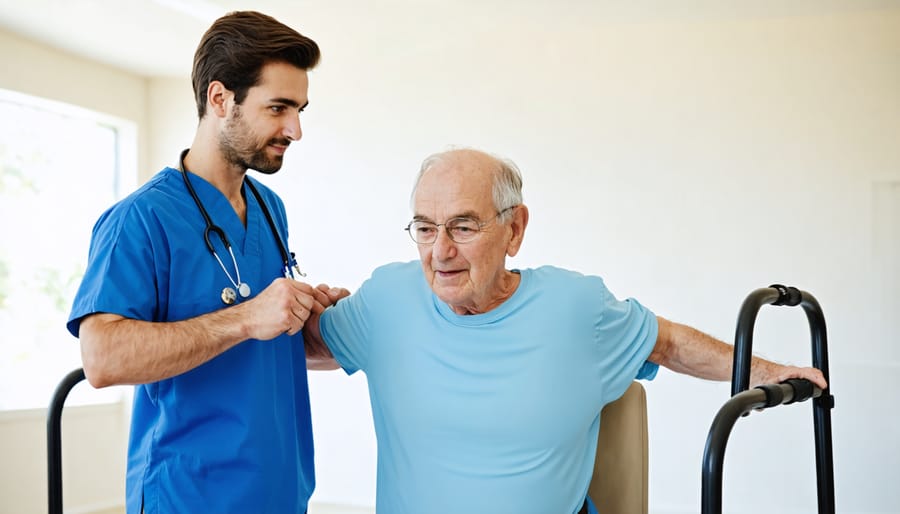Managing Parkinson’s disease effectively requires a comprehensive treatment approach that combines medical interventions, lifestyle modifications, and therapeutic support. While there’s no cure for this complex neurological condition, modern medicine offers numerous evidence-based treatments that can significantly improve quality of life and slow disease progression. From medication options like levodopa and dopamine agonists to advanced therapies such as Deep Brain Stimulation (DBS), healthcare providers can develop personalized treatment plans tailored to each patient’s specific symptoms and needs. Additionally, complementary approaches including physical therapy, occupational therapy, and speech therapy play crucial roles in maintaining mobility and independence. This comprehensive guide explores current treatment options available in Canada, empowering patients and caregivers with knowledge to make informed decisions about their care journey.
Medication-Based Treatments

Levodopa and Related Medications
Levodopa remains the most effective medication for managing Parkinson’s disease symptoms. This treatment works by replacing dopamine, the brain chemical that becomes depleted in PD. Usually combined with carbidopa to enhance its effectiveness and reduce medication side effects, levodopa helps improve movement, balance, and coordination.
Most people start with a low dose that’s gradually increased to find the optimal level for symptom control. The medication is typically taken multiple times throughout the day, with timing often coordinated around meals for better absorption. As the disease progresses, your healthcare provider may adjust the dosage or timing to maintain effectiveness.
While levodopa is highly effective, especially in the early stages of treatment, its benefits may become less predictable over time. Some people experience “wearing-off” periods when the medication’s effects don’t last as long, or “on-off” fluctuations where symptoms suddenly return. Your healthcare team can help manage these challenges by adjusting your treatment plan, potentially adding other medications, or exploring different delivery methods.
Related medications that might be prescribed alongside levodopa include dopamine agonists, MAO-B inhibitors, and COMT inhibitors. These work in different ways to either extend levodopa’s effectiveness or directly stimulate dopamine receptors in the brain.
Other Medication Options
While levodopa remains the primary medication for Parkinson’s disease, several other medication options can help manage symptoms effectively. Dopamine agonists, such as ropinirole and pramipexole, work by mimicking dopamine’s effects in the brain. These medications can be used alone or in combination with levodopa, particularly in earlier stages of the condition.
MAO-B inhibitors, including selegiline and rasagiline, help prevent the breakdown of dopamine in the brain, allowing it to work longer. These medications can be especially helpful for managing mild symptoms and may delay the need for levodopa therapy in some cases.
Other helpful medications include anticholinergic drugs, which can help control tremors and muscle stiffness, and amantadine, which may help reduce involuntary movements that can occur as a side effect of long-term levodopa use.
COMT inhibitors, such as entacapone, work alongside levodopa to extend its effectiveness. These medications are particularly useful for people experiencing “wearing-off” periods between levodopa doses.
Your healthcare provider will work with you to find the right combination of medications based on your specific symptoms, age, and overall health status. It’s important to note that medication needs often change as the condition progresses, and regular monitoring helps ensure optimal symptom management.
Surgical Interventions
Deep Brain Stimulation (DBS)
Deep Brain Stimulation (DBS) is an advanced surgical treatment that has shown remarkable success in managing Parkinson’s disease symptoms, particularly when medication becomes less effective over time. This procedure involves placing thin electrical wires, called electrodes, into specific areas of the brain that control movement. These electrodes connect to a small device, similar to a pacemaker, implanted under the skin in the chest area.
The device sends carefully controlled electrical pulses to targeted brain regions, helping to regulate abnormal neural signals that cause PD symptoms. Many patients experience significant improvements in tremors, stiffness, and walking difficulties after DBS. The stimulation settings can be adjusted as needed, allowing for personalized treatment optimization.
Ideal candidates for DBS are typically individuals who have had Parkinson’s disease for at least four years and still respond well to levodopa medication but experience significant motor fluctuations or severe tremors. The procedure is most effective for people who maintain good cognitive function and have no significant psychiatric issues.
While DBS is not a cure for Parkinson’s disease, it can substantially improve quality of life. Many patients report being able to reduce their medication doses after the procedure, which often leads to fewer medication-related side effects. The benefits of DBS can last for many years, though the underlying disease continues to progress.
It’s important to note that DBS requires careful screening and evaluation by a specialized medical team. The procedure is available at several specialized centers across Canada, and most provincial health insurance plans cover the costs. Recovery typically takes several weeks, and programming the device to achieve optimal results may require multiple adjustment sessions over several months.
Like any surgical procedure, DBS carries some risks, including infection, bleeding, or stroke. However, serious complications are rare when performed by experienced neurosurgical teams, and the potential benefits often outweigh the risks for suitable candidates.

Non-Medical Therapies

Physical and Occupational Therapy
Physical and occupational therapy play vital roles in managing Parkinson’s disease symptoms and maintaining quality of life. These specialized therapies focus on improving movement, balance, and daily living activities through targeted exercises and practical strategies.
A physiotherapist can create a personalized exercise program that helps maintain muscle strength, flexibility, and coordination. These programs often include activities like stretching, resistance training, and balance exercises. Regular physical therapy can help reduce the risk of falls, improve posture, and make walking easier.
Occupational therapy focuses on helping people with PD maintain their independence in daily activities. Therapists teach adaptive techniques for tasks like dressing, eating, and writing. They may also recommend helpful tools and home modifications, such as installing grab bars or reorganizing living spaces for better accessibility.
Both types of therapy can include:
– Gait training to improve walking patterns
– Exercises to enhance hand coordination
– Strategies for preventing falls
– Voice and breathing exercises
– Techniques for managing freezing episodes
– Activities to maintain cognitive function
For best results, therapy should begin early after diagnosis and continue regularly as part of an ongoing treatment plan. Many people find that combining these therapies with other treatments provides the most benefit. Working with qualified therapists who specialize in Parkinson’s disease ensures the most effective and safe approach to movement therapy.
Remember to discuss therapy options with your healthcare team to develop a program that meets your specific needs and goals.
Speech and Swallowing Therapy
Speech and swallowing therapy, provided by specialized speech-language pathologists, plays a crucial role in managing Parkinson’s disease symptoms that affect communication and eating. These therapists work closely with patients to maintain and improve their ability to speak clearly, express themselves effectively, and eat safely.
The Lee Silverman Voice Treatment (LSVT LOUD) is a well-established program specifically designed for people with Parkinson’s. This intensive therapy helps patients speak with greater volume and clarity by focusing on vocal exercises and breathing techniques. Many participants report significant improvements in their ability to communicate with family and friends after completing the program.
For swallowing difficulties (dysphagia), therapists teach specific exercises to strengthen the muscles involved in swallowing and provide strategies for safer eating. These may include proper positioning while eating, optimal food textures, and techniques to prevent choking. They also work on exercises to improve tongue movement and control.
Additionally, therapists can recommend assistive devices and alternative communication methods when needed. These might include voice amplifiers, speech-generating devices, or apps designed to help with communication. Regular practice of exercises at home, combined with professional therapy sessions, often leads to the best outcomes.
Many Canadian healthcare facilities offer these specialized services, and some therapy programs may be covered under provincial health insurance plans. Early intervention is recommended for the best results, even if communication problems are mild.
Lifestyle Changes and Support
Living well with Parkinson’s disease requires a comprehensive approach that extends beyond traditional medical treatments. A balanced, nutritious diet rich in antioxidants, fiber, and omega-3 fatty acids can help manage symptoms and support overall health. Many people with PD benefit from working with a registered dietitian to develop a personalized meal plan that addresses their specific needs.
Regular exercise is crucial for maintaining mobility and managing symptoms. Activities like tai chi, yoga, swimming, and walking can improve balance, flexibility, and strength while helping to reduce stiffness. Working with a physiotherapist can help develop a safe and effective exercise routine tailored to individual abilities and limitations.
Building a strong support network is essential for managing this and other medical conditions. Support groups provide opportunities to connect with others facing similar challenges, share experiences, and learn coping strategies. Family and friends can offer practical assistance with daily tasks and emotional support.
Many communities offer specialized programs for people with PD, including exercise classes, educational workshops, and social activities. These programs can help maintain independence, boost confidence, and improve quality of life. Additionally, working with an occupational therapist can help identify ways to modify home environments and daily routines to enhance safety and independence.
While there’s no cure for Parkinson’s disease, various treatment options can effectively manage symptoms and improve quality of life. From medications and surgical interventions to physical therapy and lifestyle modifications, a comprehensive treatment plan can be tailored to each individual’s needs. Consult with your healthcare provider to develop a personalized approach that best suits your symptoms and circumstances.

